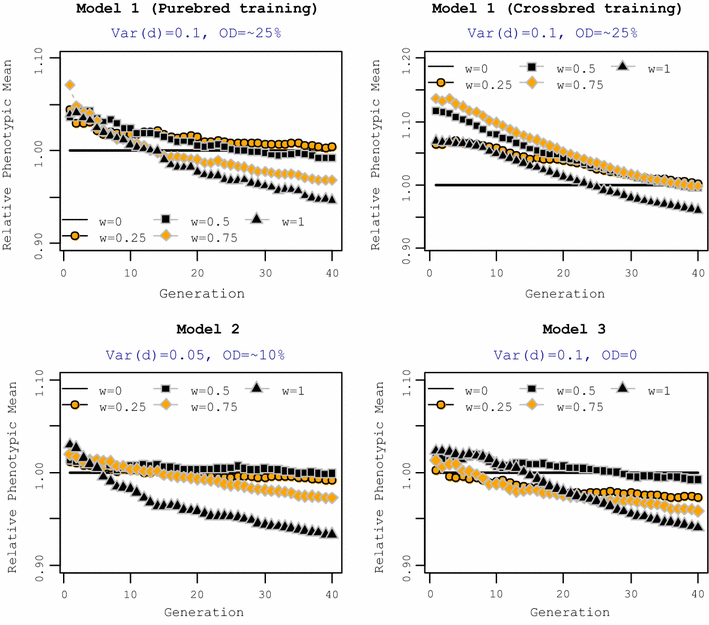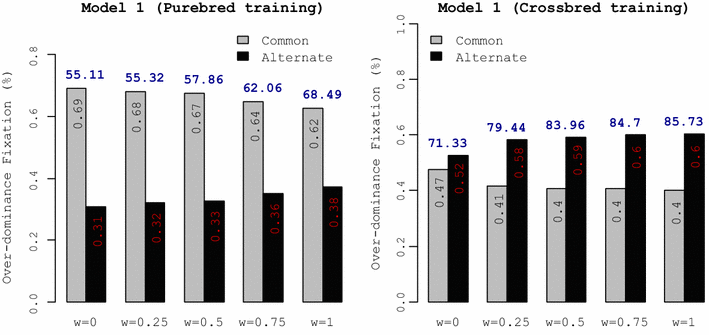Balanced selection on purebred and crossbred performance increases gain in crossbreds
- PMID: 29566647
- PMCID: PMC5865367
- DOI: 10.1186/s12711-018-0379-9
Balanced selection on purebred and crossbred performance increases gain in crossbreds
Abstract
Background: Genomic selection can be applied to select purebreds for crossbred performance (CP). The average performance of crossbreds can be considered as the summation of two components, i.e. the breed average (BA) of the parental breeds and heterosis (H) present in crossbreds. Selection of pure breeds for CP based on genomic estimated breeding values for crossbred performance (GEBV-C) or for purebred performance (GEBV-P) may differ in their ability to exploit BA and H and can affect the merit of crossbreds in both the short and long term. Selection based on GEBV-C is beneficial for CP, because H in crossbreds is efficiently exploited, whereas selection on GEBV-P results in more genetic progress in pure breeds, which increases the BA component of CP. To investigate the outcome of selection on GEBV-C and GEBV-P in both the short and long term, a two-way crossbreeding program was simulated to test the following hypotheses: (1) does selection on GEBV-P result in higher long-term CP compared to selection on GEBV-C and (2) does selection on a combination of GEBV-P and GEBV-C lead to more long-term gain in CP than selection on either separately.
Methods: We investigated the performance of crossbreds in a two-way crossbreeding program across 40 generations and considered different criteria to select purebred parents that ranged from selection on purebred performance to selection for CP with different weights on genomic evaluations based on purebred and CP. These criteria were compared under three genetic models to investigate the effects of the amount of dominance variance, absence of over-dominance, and the structure of the reference population on CP, both in the short and long term.
Results and conclusions: Although beneficial in the short to medium term, genomic selection in pure breeds on a criterion that specifically targets CP was inferior to selection for purebred performance in the long term. A selection criterion that maximizes a combination of short- and long-term responses in CP, should improve the components that define crossbred merit (i.e., BA and H) simultaneously.
Figures








References
Publication types
MeSH terms
LinkOut - more resources
Full Text Sources
Other Literature Sources
Miscellaneous

